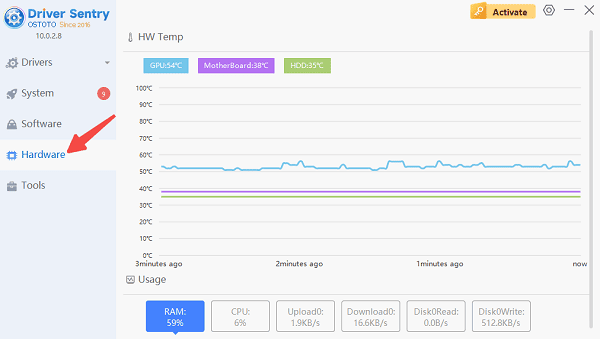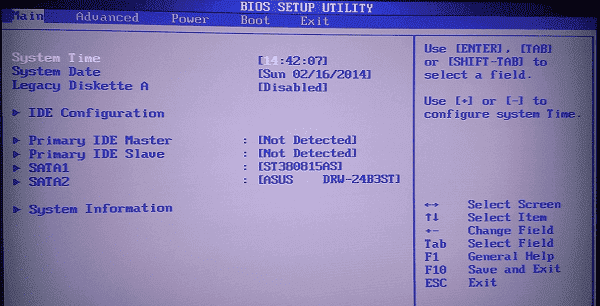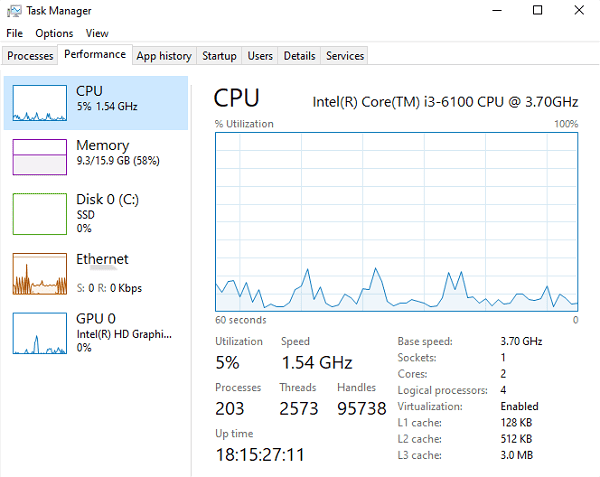
Monitoring computer temperature is crucial for maintaining hardware health. Excessive temperature may lead to hardware performance degradation or even damage. This article will introduce 5 methods for checking computer temperature.
1. Using Driver Sentry to Check Computer Temperature
Driver Sentry is a comprehensive software that integrates driver management, hardware detection, system optimization, and other functions.
Its hardware detection function can display the temperature of hardware such as CPU, GPU, and hard disk in real time, which is very suitable for users who need to monitor the hardware status frequently.

Open Driver Sentry and enter Hardware Options, real-time temperature and occupancy status of computer hardware can be seen under operation monitoring.
2. Using Windows built-in tools to check CPU temperature
The Windows system itself does not directly provide the function of viewing CPU temperature, but some information about temperature can be indirectly understood through the event viewer.
Press the "Win + R" key combination to open the Run dialog, type "eventvwr.msc", and then press Enter to open the Event Viewer.
In the "Event Viewer" window, expand Windows "Logs>System".

Find temperature related events on the right side, which are usually generated by BIOS or some hardware monitoring programs.
Double click on the relevant event to view detailed information, including temperature warnings or error reports.
3. Using BIOS/UEFI settings to view hardware temperature
Many modern computers include hardware monitoring functions in their BIOS or UEFI settings, which can directly view the temperature of the CPU and other important components.
Restart the computer and press the designated key (usually F2, Del, or Esc) to enter BIOS/UEFI settings during startup.
Find options called "Monitor", "Health", or "Hardware Monitor".

Here you can see the temperature of the CPU, GPU, and other hardware.
Some BIOS/UEFI also allow setting temperature alerts, which will sound a warning when the temperature exceeds the preset value.
4. Use Task Manager to view CPU load
Although the task manager does not directly display the CPU temperature, it can provide information on the CPU load situation, indirectly inferring possible temperature trends of the CPU.
Press "Ctrl+Shift+Esc" to open the "Task Manager" and switch to the "Performance" tab.
You can view the real-time running status of the CPU.

If the CPU is in a high load state for a long time, it may mean that the temperature will also increase accordingly.
5. Maintain a good heat dissipation environment
In addition to using software to monitor temperature, maintaining a good cooling environment is also crucial. Regularly cleaning internal dust, ensuring that cooling fans are functioning properly, and using high-quality thermal paste are all effective measures to lower the computer's temperature.
Turn off the computer and disconnect the power cord, use compressed air to clean the internal dust, especially the CPU fan and heat sink.
Check if the cooling fan is functioning properly and replace the damaged fan if necessary.
If conditions permit, the heat dissipation paste can be replaced to improve heat dissipation efficiency.
Maintain good ventilation around the computer and avoid prolonged operation in high-temperature environments.
By following these steps, you should be able to effectively check the temperature of your computer. If the problem persists, seek professional technical support.Regularly monitor computer temperature to ensure that your computer is always in optimal working condition.
See also:
Methods to Reset Network Adapter
How to Fix Wireless Mouse Connection Failure
6 Methods to Fix Bluetooth Speaker Not Working
How to Open NVIDIA Control Panel and Settings Guide